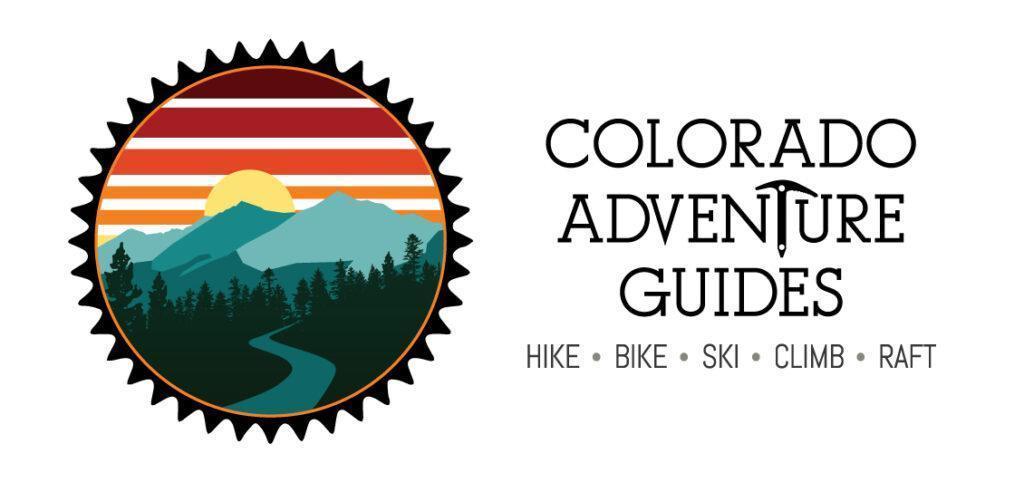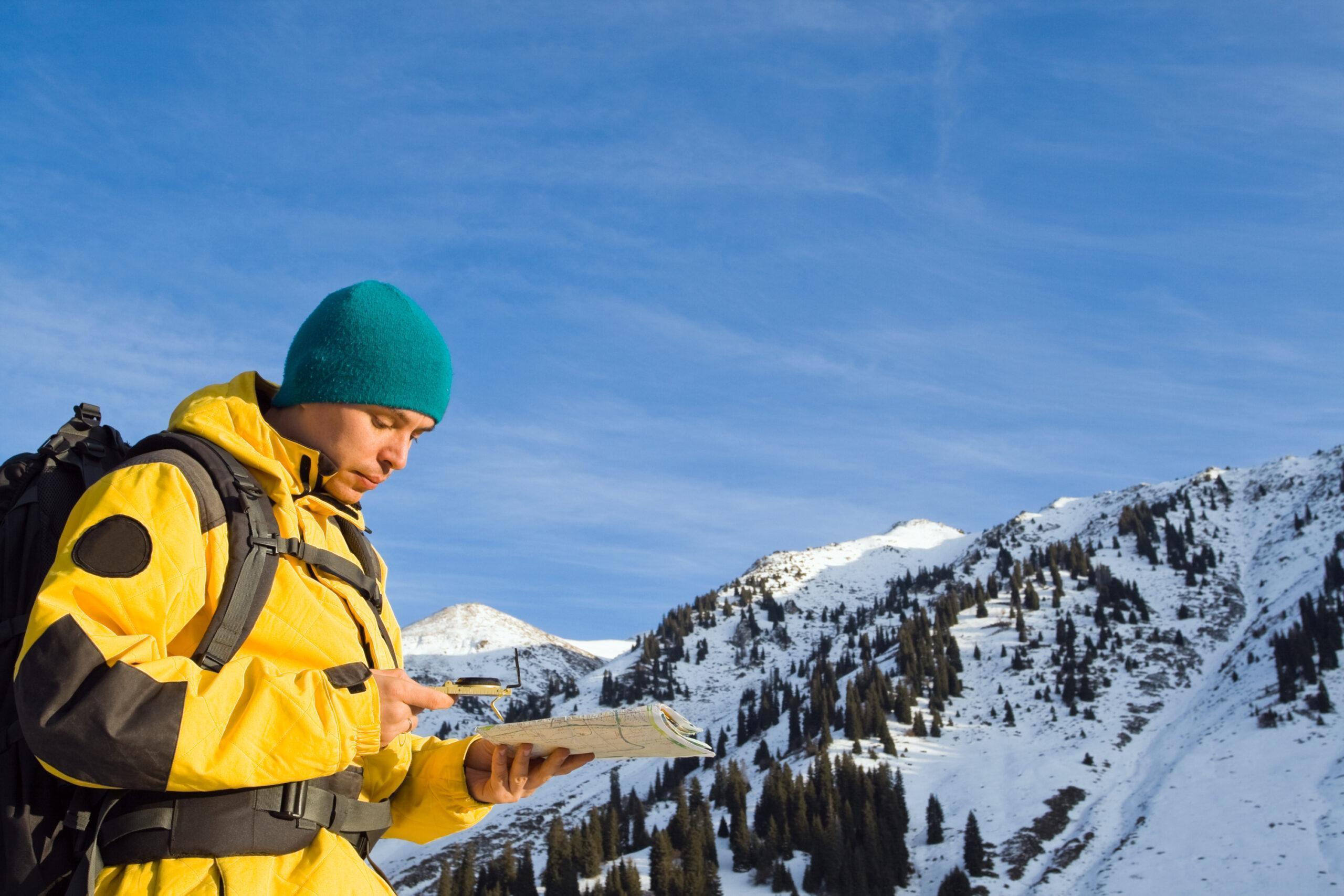

Recreating in the snowy mountains of Colorado can be an amazing experience. Here at Colorado Adventure Guides we want to make sure that you are properly prepared for winter in the backcountry. Below we have composed our recommended packing list for your winter backcountry adventure.
Are you looking for backcountry education? We also offer a full array of backcountry educational and AIARE Avalanche courses. Intro to Backcountry Ski/Split, AIARE Level 1, AIARE Rescue, and AIARE Level 2.

You want to get out and have fun in the winter backcountry, but you also need to be prepared with the right gear, planning, and education. It’s all fun and games until things don’t go as planned, and so it is crucial to always be prepared for adversity. What you bring may vary depending on mode of travel, number of people, duration of your activity, etc., but below is a recommended list of gear and preparation that can and should be considered for any winter backcountry activity.

Dressing properly and having the correct equipment will help provide a more safe and fun experience for you and your group. Remember, the weather can change quickly and drastically. Pack for the season, not the weather. When choosing layers, think about what you would need to survive a long period of inactivity out in the elements. No matter the season, dress like an onion, utilizing the layering system. This system includes a base layer, insulating layer, and shell layer.
Be bold, start cold! You’ll warm up quickly as you begin moving. On your hike, remember that sweat is the enemy, and layers should be removed before you get sweaty. Reduce your pace to reduce sweating, if needed. Likewise, put on your shell layers before your clothes get wet with rain or snow, and bring a rain cover to keep your essential layers dry in your pack.
We strongly recommend wearing technical clothing on all winter activities, but it is never a bad idea regardless of which activity you participate in. Technical clothing is designed to help regulate body temperature and keep perspiration off of the skin. It dries faster, keeps you warmer, and is much more comfortable during exercise. Choose wicking fabrics: synthetics like nylon, polyester, or rayon; wool; and silk. Try to avoid wearing cotton like hoodies, denim jeans, cotton socks, etc. Maybe you’ve heard the phrase, “cotton kills.” That’s because cotton traps moisture, which in turn pulls away body heat via conduction. When cotton gets wet, it stays wet, making you cold.
A base layer is a layer of clothing worn next to your skin with the purpose of wicking sweat away so that you stay dry. Wearing a base layer made from a synthetic material such as polyester, polypro, or polyamide allows your body to regulate its temperature without feeling cold. These materials also dry very quickly. Another great option is wool which also prevents perspiration from staying in contact with your skin, and even wet wool is a good insulator. Lastly, wool prevents odors from developing so you don’t have to wash your merino clothes after each wear.
CAG Recommendations: Ortovox Men’s Baselayers Women’s Baselayers
A mid-layer is an insulation layer which will protect you from the cold by conserving the heat generated by your body. The fiber’s ability to keep the warm air locked in is what makes it an insulating layer. The more air it locks in, the more your clothes will maintain your body heat. Materials such as fleece, down, or synthetic down make great insulating layers.
Adapt your mid-layer to your warmth requirements:
CAG Recommendation: Ortovox Men’s mid-layers Women’s mid-layers
A shell is a waterproof or shielding layer that is designed to protect you from the elements like as precipitation and wind. This layer should ideally have some waterproofing qualities as well breathable membranes. Waterproof clothing also has waterproof seams and some shell layers have zippered vents to improve perspiration removal. The more breathable the fabric, the more suited it is for high-intensity exercise. Water-repellent clothing, also called softshell, is very flexible and feels nice to wear. It is breathable, so sweat is removed when you exert yourself. If the weather conditions deteriorate, the water-repellent treatment on the outer shell of the material, or in some cases on all of the membrane, will be enough to protect you from light rain or a quick snow shower.
CAG Recommendation: Ortovox Men’s Shells Women’s Shells
The body loses a good percentage of heat through the head and hands. In the winter it is recommended that you carry layering for both your head and your hands.
Head Protection: A wool or synthetic beanie will help to retain heat when cold. While exerting energy, this layer might create too much heat, and so a buff or ball cap can help to create more airflow and wicking properties as well as sun protection with a brimmed hat.
Hands: On the common thread of layering, we recommend carrying 2 pairs of gloves. One glove is a liner-style glove, thinner and more breathable for use while exerting energy. You also want to bring a larger, more “shell” style glove that offers more protection from the elements and retains more heat.
CAG Recommendations: Ortovox Gloves Headwear
Snow blindness is sunburn on your eyes. Snow reflects about 80% of the sun’s harmful UV rays right back into our faces. Make sure to always protect your eyes with sunglasses and/or goggles.
That said, it is also important to protect our exposed skin with sunscreen, always.
CAG Recommendation: Julbo Goggles
Match your footwear with your intended mode of travel.
Socks: First layer of defense is to make sure that you have the appropriate socks. Wool, Smart-wool or synthetic socks will be best.
Boots: Ski boots, snowboard boots, or waterproof hiking boots

Anybody who travels on snow in a mountainous environment should be carrying an avalanche transceiver. An avalanche transceiver or avalanche beacon is a radio transceiver (a transmitter and receiver in one unit) operating at 457 kHz for the purpose of finding people buried under snow. Before heading out into the field, all the members of a group activate their transceivers in the transmit mode, causing the device to emit low-power pulsed radio signals during the trip. Following an avalanche, if some members of the party are buried, the others may switch their transceivers from transmit into receive mode, allowing use as a radio direction finding device to search for signals coming from the buried victims.
An avalanche transceiver is not considered a preventive measure against possible avalanche burial, but rather it is a way to reduce the amount of time victims remain buried under the snow, which makes it more likely to save their lives.
CAG Recommendation: Ortovox Beacon
Another piece of avalanche response equipment that everybody in your group should be carrying is an avalanche probe. An avalanche probe is a collapsible and easily deployable rod of varying lengths commonly in the 160cm to 300cm+ range. They are typically made of aluminum, carbon, or steel and are used to probe through avalanche debris following an avalanche. It helps you pinpoint the exact location of a buried victim and measure the burial depth. Avalanche probes, in conjunction with an avalanche transceiver, are essential avalanche safety equipment as they allow for quick action.
CAG Recommendation: Ortovox Probe
The 3rd piece of necessary avalanche equipment is an avalanche shovel. An avalanche shovel is just as important as an avalanche transceiver and avalanche probe. Avalanche shovels are metal and collapsible with varying grip types, shaft lengths, and blade size. The construction, functionality, and safety standards are of decisive importance when purchasing a shovel.
CAG Recommendation: Ortovox Shovel
A first aid kit isn’t necessary for each person in your group but there should be an adequate first aid kit in your group for your group size and number of days in the field. Things to consider when putting your first aid kit together:
Some considerations when preparing your kits:
The repair kit is another piece of equipment that could be considered as “group gear.” Not everybody in your group needs one, but you should have at least one kit for your group. Contents of the kit may vary depending on mode of travel, group size, location, and number of days in the field. Some examples of a repair kit items are:

When traveling in the backcountry in winter the last thing you want to do is get caught out post-holing in waist deep snow moving .1 miles per hour. Be prepared and match your mode of travel with your intended activity for the day.
Along with the rest of the essentials for your backcountry packing list, should be your navigational tools. Pack the tools that will help get you back to a trailhead should you become lost or go off-trail. Do not rely solely on GPS watches, smart phones, or other electronic navigation devices, as they can lose battery power or functionality. Alternatively or additionally, pack a topographical map and a compass—and know how to use them. Consider taking a map and compass course.
CAG Recommendation: Suunto MC-2 NH Mirror Compass
Always prepare to spend a night in the woods, which means packing a headlamp or flashlight (as well as extra batteries.) Consider a light with a lock mode so it doesn’t turn on accidentally, and red mode for maintaining night vision. Check that your light is functional before heading out and keep your headlamp in an easy-to-access spot in your pack.
CAG Recommendation: Black Diamond Storm
The amount of food and water that you bring on your trip can vary on length and physical exertion. At the least we recommend to start out with 2 to 3 liters of water per person. Don’t forget to pack the tools to make additional clean water if needed, like a filter or iodine tablets, for if you’re out longer than expected or drop a bottle and spill all your water. Tablets of iodine or something similar can be tucked into a first-aid kit for emergencies.
Pack enough food for your planned hike, plus more than you think you’ll need. If a hike becomes longer than originally planned, extra food will help keep up energy and morale, and help you make clear decisions. A full day’s worth of extra food is a good rule of thumb, preferably that which doesn’t need to be cooked.
What should you eat? First off, fuel up adequately before you even set foot in the field and pack a good blend of proteins, carbs, and fats to eat consistently throughout the hike. Carbs provide quick bursts of energy but can cause a “crash” and fatigue shortly after. Fats and proteins are slower burning and have more effect on our long-term energy levels. Good snacks include nuts, chocolates, cheese, meat sticks, energy bars, dehydrated fruits, and crackers.
Your emergency shelter is your protection from the elements, used to keep yourself dry and warm in case you become stranded or injured on the trail. When day hiking in more remote places, a good rule of thumb is to pack as if you would need to spend the night. We recommend packing one or more of the following:
CAG Recommendation: Rescue Sled/Shelter
Don’t underestimate the importance of caring for your skin and eyes while enjoying the outdoors. Use a broad spectrum sunscreen on exposed skin, and reapply frequently. Choose sunglasses and goggles with ultraviolet (UV) protection; polarized lenses are best for reflected light off of water and snow. Products like Dermatone provide a thick protective coating on your skin that protects against sun, wind, and (in the winter) frostbite for a time.
If you’re venturing to higher elevations, keep in mind that ultraviolet rays are often stronger the higher you go. The atmosphere is thinner at higher altitudes and absorbs less UV radiation from the sun. UV radiation intensity increases by about 10 to 12 percent for every 3,000 feet of increase in altitude, and to compound that, snow also reflects about 80% of UV rays back into the atmosphere and onto your skin.
Have a way to communicate with your team and the outside world. Communication is extremely important. Below are some examples of different options:
CAG Radio Recommendation: BCA Link 2.0
CAG GPS Recommendation: Garmin In-Reach

Before you head out into the field, make sure to have a plan. Below are some important considerations when making your plan:
Use your digital resources, books, maps, etc. to plan your route and familiarize yourself with the area you will be exploring. Take note of the mileage and elevation gain of your intended trip, certain decision points, other potential hazards including avalanche and weather, evacuation points, nearest medical facilities, and so on. Always create a Plan B, or bailout option, for your trip should the weather turn or other challenges arise. Constantly monitor where you are at in line with your plan and always be willing to go with your backup plans.
Digital resources are great but map reading and using a compass are skills that are perhaps the most important to practice. Be sure to choose the right map for your activity and area, learning the symbols, scale, compass rose, colors, declination, and contour interval of the map you will take into the field. Be familiar with your compass and how to use it. Practice with your map and compass with identifying aspects/elevations, specific features, and shooting bearings from map to compass and compass to map. No matter how sure you are, it doesn’t hurt to check the map.
Traveling in the winter backcountry requires a strong understanding of avalanche risk and the knowledge to mitigate these risks through appropriate terrain assessment and decision making. There are several different options when it comes to avalanche education and below is our recommended path.
Free Resources – There are many free resources out there including books, online searches, free clinics or seminars, and more
Intro to Backcountry Course or Go with a Mentor – Next we would recommend going out with somebody else experienced or to book a 1-day Intro to Backcountry Course. This field-based course covers gear use, avalanche awareness, terrain use and management, and more.
AIARE Avalanche Level 1 and/or Rescue Course – Now that you have a solid understanding of how your gear works, you’ve learned some basic touring skills, and taken an introduction to terrain and avalanche awareness, it’s time to get some education. While there are different options for avalanche education courses, we recommend taking an AIARE (American Institute for Avalanche Research and Education) credited course.
AIARE Avalanche Level 2 Course – You took your knowledge and put it use. Now that you have some experience applying the knowledge and processes that you learned in your AIARE 1 course, take it a step further and learn how to become a leader within a small group and close gaps of uncertainty in the backcountry in one of our AIARE 2 courses.
Pro Level Avalanche Course – If you’re looking to continue your education, or are looking to start working in the industry, take a Pro level course. Dive deeper into operational and advanced topics in these courses and learn how to mitigate risk from the operational side.
Avalanche Refresher Course – If you don’t use it, you lose it! If it has been a while since you took an avalanche course, or maybe you just haven’t used the skillset in a while, then take an avalanche refresher course, or re-read your materials, or attend free clinics and seminars to keep your skills refreshed and keep abreast of the latest developments in avalanche safety.
Know your abilities and grow your abilities: Your first-aid kit is only as good as your ability to use it, so get trained through any number of courses. Below is a recommended list of options:
Prevention is always the best medicine. Many ailments in the backcountry are simple to prevent outright, or to address in their early stages. The consequences get higher as ailments get worse or combine with other challenges or injuries. In other words, fix the small problems before they become big problems. Most importantly, stay well fed, stay hydrated, and layer properly.
CAG Recommendation: Desert Mountain Medicine
Our friendly reservation staff is standing by to answer questions and discuss the details of your avalanche safety course.